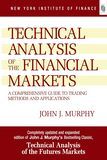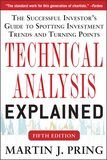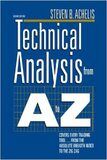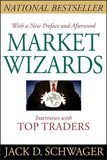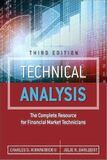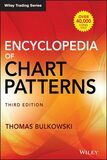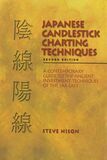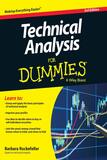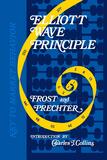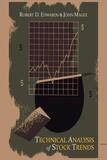10 Best Technical Analysis Books [2025]
Technical analysis is unique in that it foregoes the study of company financials, industry conditions and other information and focuses on price trends to predict future trends. Below is the list of 10 best books on technical analysis:
- Technical Analysis of the Financial Markets: A Comprehensive Guide to Trading Methods and Applications ( Get this book )
- Technical Analysis Explained: The Successful Investor's Guide to Spotting Investment Trends and Turning Points ( Get this book )
- Technical Analysis from A to Z ( Get this book )
- Market Wizards, Updated: Interviews With Top Traders ( Get this book )
- Technical Analysis: The Complete Resource for Financial Market Technicians ( Get this book )
- Encyclopedia of Chart Patterns ( Get this book )
- Japanese Candlestick Charting Techniques ( Get this book )
- Technical Analysis for Dummies ( Get this book )
- Elliott Wave Principle: Key to Market Behavior ( Get this book )
- Technical Analysis of Stock Trends ( Get this book )
Before we go into the details of the books, covering theoretical aspects for you to acquire knowledge on technical analysis, you can check out this Basic & Advanced Technical Analysis Bundle Course for practical exposure to this concept.
Let us discuss each technical analysis book in detail, along with its key takeaways and reviews.
#1 - Technical Analysis of the Financial Markets
A Comprehensive Guide to Trading Methods and Applications
by John J. Murphy
Book Review:
A comprehensive resource technical analysis book that lays down the basic principles and concepts underlying technical analysis and how they can be successfully applied in the real world. This work is intended to help traders understand technical analysis better and become acquainted with the latest technological tools, which have grown to be part of the necessary know-how for any trader. The author explains inter-market relationships, stock rotation, and candlestick charting along with other concepts and helps understand the art and science of reading charts and technical indicators to make intelligent trading decisions. A part of the focus is on futures markets and the relevance of technical analysis while dealing with complex F&O instruments. In short, a complete guide to technical analysis for real-life traders.
Best takeaway
- It covers a wide range of concepts in technical analysis and presents complex ideas in a highly accessible language to the average reader.
- It offers helpful information on technical indicators, chart patterns, and candlestick charting, supported with practical examples and a focus on practical application.
- An excellent reference book for traders willing to learn about using technical analysis in futures markets with success.
- A must-read for traders in the true sense of the word.
#2 - Technical Analysis Explained
The Successful Investor’s Guide to Spotting Investment Trends and Turning Points
by Martin J. Pring (Author)
Book Review:
Known as the “Bible of Technical Analysis,” this momentous work seeks to make technical analysis an essential and inseparable part of an average investor’s investment strategy. The author offers revealing insights into the study of technical analysis as a practical and valuable tool for predicting price movements and how to invest with confidence in today’s increasingly complex markets. A great deal of focus is on developing and implementing successful strategies with the help of advanced investment tools and techniques and how investor psychology shapes the markets. In addition, readers would find helpful information on how they can profit by preventing emotions from interfering with their calculated decisions.
The best takeaway
- It is a reasonably detailed work that encompasses almost every aspect of investing in today’s markets while retaining its focus on technical analysis as an efficient investment approach.
- Easy-to-read technical analysis book for lay readers and professionals to acquire an in-depth understanding of the functioning and structure of modern markets, the utility of cutting-edge investment tools and techniques, and the relevance of the technical analysis.
#3 - Technical Analysis from A to Z
by B Steven Achelis
Book Review:
It is an excellent read for beginners to learn the basics of technical analysis that presents the concepts and standard terminology employed in an easy-to-understand format in the first part. Over 100 technical indicators and a wide range of commonly used chart patterns are explained lucidly in the latter part of this work. What makes this work of such great utility is the systematic approach adopted by the author in explaining each of the indicators and illustrating them with relevant practical examples in this top technical analysis book.
Best takeaway from this book
- An easy read meant for lay readers interested in learning basic technical analysis concepts without much effort.
- Information on technical indicators and chart patterns can help a beginner get going.
- A must-read for those new to technical analysis.
#4 - Market Wizards, Updated
Interviews With Top Traders
by Jack D. Schwager (Author)
Book Review:
This technical analysis book is a fascinating collection of top traders’ interviews that offer invaluable insights into some of the best minds in the industry. An exciting read for novice and professional traders to learn the nuances of the art of trading and enhance their risk management skills from fantastic success stories of traders in a league of their own. This work includes the interviews of Bruce Kovner, Marty Schwartz, Ed Seykota, Tom Baldwin, and other super traders. In addition, the author has put a great deal of effort into developing a set of guiding principles for traders based on the first-hand experiences of these traders.
Key Takeaways
- This technical analysis book is one of the best informal works on trading with a rare appeal.
- For the curious at heart, the secrets of the super traders reveal in an easy-to-follow manner, which can help even an average trader learn how to trade with a difference.
- An attractive, informative, and inspiring read for anyone passionate about trading.
#5 - Technical Analysis
The Complete Resource for Financial Market Technicians
by Charles D. Kirkpatrick II (Author), Julie R. Dahlquist (Author)
Book Review:
An extensive manual on the theory and application of technical analysis, this work is the official companion to the Chartered Market Technician (CMT) program. It discusses an entire spectrum of concepts related to technical analysis, including tested sentiment, momentum indicators, the flow of funds, seasonal effects, risk mitigation strategies, and testing systems, supported with valuable illustrations and practical examples. This work also covers advanced concepts in pattern recognition, market analysis, and experimental indicators, including Kagi, Renko, Ichimoku, and Clouds, along with novel portfolio selection techniques, among other concepts, to keep the readers updated with recent advances in the field. What brings added value to the work is the rare combination of academic and practical approaches to the study of technical analysis, making it an invaluable resource for both students and professional traders.
Key Takeaways
- As an official companion to the Chartered Market Technician (CMT) program, this work is an excellent guide for CMT and Series 86 exam exemption students.
- The single most significant advantage of this book is that it systematically covers the expansive field of technical analysis, making it accessible to even an average reader.
- Practical illustrations and updated information at every step add to the utility of this work for a trader.
- A complete knowledge resource of technical analysis in the true sense of the word.
#6 - Encyclopedia of Chart Patterns
by Thomas N. Bulkowski (Author)
Book Review:
An in-depth technical analysis book to chart pattern behavior in bull market and bear markets with updated information and 23 new patterns included benefiting readers. In addition, it includes ten event patterns and helps an average trader learn how to trade significant events, including quarterly earnings announcements and stock upgrades and downgrades, among other things. Each chart pattern is analyzed and discussed in detail, beginning with an introduction to a specific pattern before discussing pattern behavior, performance rank, broad identification guidelines, and understanding chart pattern failures and how to avoid them. The author also discusses practical strategies to trade with the help of chart patterns and how to minimize inherent risk. Relevant statistics aid the reader in understanding chart pattern behavior better and learning how to trade confidently.
Key Takeaways
- This technical analysis book extensively covers chart patterns along with detailed nuances on identifying, interpreting, and utilizing chart patterns for trading with great clarity.
- Especially useful for beginners in the field who need to be acquainted with chart pattern behavior to trade better in complex market conditions and manage risk effectively.
- A must-read for anyone interested in learning about the everyday application of technical analysis.
#7 - Japanese Candlestick Charting Techniques
by Steve Nison (Author)
Book Review:
Widely acclaimed as a work in its class, which introduced Japanese candlestick charting techniques to the Western world, it is an excellent guide on the background and basic principles underlying this approach. Today, candlestick charting has become an almost integral part of any study on technical analysis and has been applied with great success by traders worldwide. The author has also included information on how this innovative charting technique can be fused with various technical tools and employed as a versatile analytical tool for market analysis. This approach can be successfully adopted for analyzing futures markets, equities, or speculation and hedging, showcasing the universal applicability of its principles. This work is recommended for every technical trader, supported by hundreds of examples.
Best takeaway from this book
- Excellent introductory work to candlestick charts for beginners as well as professionals.
- It brings out the relevance, range, and depth of technical analysis applied to the day's complex markets.
- This technical analysis book shows how to combine this technique with any other technical tool to analyze almost any market, be it equities, futures for hedging, speculation, and trade with confidence.
- An essential reading companion for anyone interested in learning the art and science of technical analysis with candlestick charts.
#8 - Technical Analysis for Dummies
by Barbara Rockefeller
Book Review:
It is an easy-to-understand yet highly informative guide to technical analysis for an average investor or trader. The author briefly explains the basics of technical analysis and focuses on utilizing its concepts for intelligent trading decisions and profit maximization. This work sheds light on understanding current market conditions and using actual data to decide which securities one should hold and sell, identifying crowd behavior and patterns, using chart indicators, and carrying out dynamic analysis, among other things. The readers are also introduced to a novel method of developing a personalized analytical approach that fits in with their psychological profile. It is one of the best introductory books on technical analysis in terms of simplicity of language and lucid presentation of concepts.
Best takeaway
- A simple yet masterful introductory work on technical analysis which covers a wide range of concepts that hold practical value for an average investor or trader.
- This work covers everything from drawing a trendline to studying market conditions and utilizing actual data to make reliable trading decisions.
- To top it all, readers can quickly learn how to choose the analytical tools of their choice and trade with confidence.
- A recommended read for novice traders.
#9 - Elliott Wave Principle
Key to Market Behavior
by A.J. Frost, Robert R. Prechter Jr., Charles J. Collins (Foreword by)
Book Review:
Excellent analytical work on the Elliott Wave principle proposes that one can study stock market movements with the help of patterns that come together to represent more significant wave-like movements. This work describes how an understanding of Elliott wave theory can help unravel the mysteries of seemingly random stock market movements and can be used to forecast future market trends accurately. The authors assert the underlying scientific principle behind this system can be found at work in nature, art, and mathematics, as well as in the human body, and go on to analyze historical ups and downs with the help of this system. Almost academic work with practical applications in finance and studying stock market behavior.
Best takeaway from this book
- Introduces Elliott wave theory to study stock market movements and make intelligent moves in keeping with emerging patterns.
- On a realistic level, technical analysts have employed this method along with other technical tools, and it would be best not to rely on it in isolation while making investment choices.
- Not one of the most accessible technical analysis books for even a trader but worth the time spent if one wishes to learn the inherent patterns underlying stock market behavior.
#10 - Technical Analysis of Stock Trends
by Robert D. Edwards, John Magee
Book Review:
A masterpiece on technical analysis is nothing less than an in-depth exposition of chart pattern analysis and a detailed discussion on the evolution of the Dow theory and how one can replace it with a viable alternative. Initially published in 1948, this work continues to be an essential resource for chartists, focusing on vertical bar charts and stressing their utility for market analysis. In addition, the latest edition of the work includes a great deal of updated information on the subject, including an expanded version of pragmatic portfolio theory and the Leverage Space Portfolio Model, among other concepts. In short, a true classic for technical analysts and chartists.
Best takeaway from this book
- Particular focus on vertical bar charts and how a chartist can utilize them to their advantage in everyday trading.
- It contains extensive information on chart pattern analysis, making it an excellent reference work for novice and expert chartists.
- Updated with the latest theories, tools, and techniques to bring added relevance to the work in today's markets.
Amazon Associate Disclosure
WallStreetMojo is a participant in the Amazon Services LLC Associates Program, an affiliate advertising program designed to provide a means for sites to earn advertising fees by advertising and linking to amazon.com.
